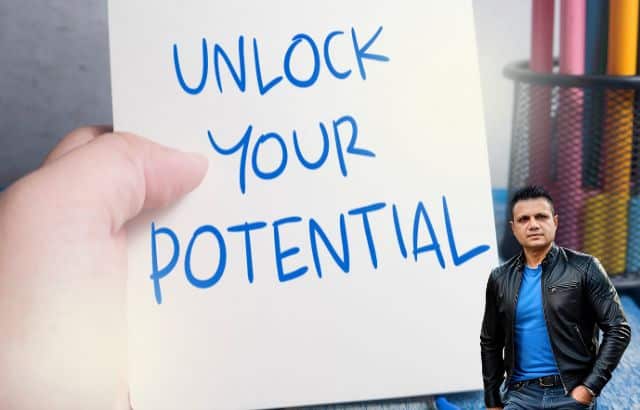Leadership shapes businesses, communities, and even nations. From boardrooms to sports fields, from startups to governments, the impact of a leader is visible everywhere. Yet, leadership is not simply about holding a title or giving orders—it’s about inspiring people, making the right decisions, and creating lasting impact.
What truly makes a good leader in today’s world?
Leadership has never been more important—or more misunderstood. Many assume leaders are born, not made, but data says otherwise. According to a Deloitte survey, 77% of organizations report leadership gaps, and 63% of millennials believe their leadership skills are not being fully developed. This shows that leadership qualities are not fixed—they can be learned, practiced, and refined.
But what separates ordinary managers from extraordinary leaders?
It’s not titles, authority, or charisma—it’s a combination of values, vision, and the ability to inspire others even in the toughest times. Think about leaders during the pandemic, or CEOs who guided companies through recessions—their qualities defined outcomes for millions of people.
Why does this matter beyond business?
Because leadership affects not only profits, but also people, communities, and social progress. A good leader doesn’t just direct work—they create environments where individuals thrive, ideas flourish, and society benefits.
Hirav Shah’s Point of View:
“Leadership is not about control; it’s about clarity. When leaders provide direction with integrity, communication, and strategy, they create an ecosystem where success becomes inevitable.”
Table of Contents
Integrity & Ethics: Why Are They the Foundation of Leadership?
Integrity is often called the cornerstone of leadership. Without it, even the most skilled or charismatic leader cannot sustain respect or trust. According to an EY Global Integrity Report, 97% of employees believe integrity is critical to a business’s long-term success, yet over 40% say their organizations often fall short in practicing it.
Consider leaders like Mahatma Gandhi or Nelson Mandela—their moral courage and ethical choices inspired movements that transformed nations. In contrast, leaders who compromised ethics for short-term gains eventually lost credibility, damaging both their reputation and their organizations.
Traditional leadership vs. modern leadership: In the past, leaders could rely on hierarchy and authority alone. Today, transparency, honesty, and ethical decision-making are non-negotiable. Employees, customers, and even investors now hold leaders accountable in real time through social media and public scrutiny.
Social Impact: Leaders with integrity foster trust not only within teams but also in society. Ethical leadership creates fairness, reduces corruption, and inspires younger generations to value honesty as a strength, not a weakness.
Hirav Shah’s Point of View:
“Integrity is the DNA of leadership. Without it, no vision, strategy, or execution can succeed. Leaders who anchor their decisions in ethics build trust that outlives their tenure.”
Vision & Strategy: Can Leaders Succeed Without a Clear Direction?
A leader without vision is like a ship without a compass—drifting, uncertain, and vulnerable to every storm. Vision is what sets leaders apart from managers; it gives purpose, inspires followers, and defines the path ahead.
Research shows that 71% of employees rank vision as the most important quality of a leader, yet only 22% believe their leaders have a clear direction (Gallup, 2022). This gap explains why many teams lack motivation and alignment—they don’t see where they’re headed.
Consider Steve Jobs, who envisioned putting “a computer in every home” when it seemed impossible. Or Dr. A.P.J. Abdul Kalam, whose strategic vision transformed India’s space and defense programs. Their ability to look beyond the present created a roadmap that changed industries and inspired generations.
Traditional leadership vs. modern leadership: Old leadership often relied on control and routine. Modern leadership is about creating a strategic roadmap—balancing long-term goals with short-term execution. Leaders today must anticipate market shifts, technological disruptions, and societal expectations while keeping their teams inspired.
Social Impact: A leader’s vision doesn’t just guide businesses; it influences society. A strong vision fosters innovation, creates jobs, and addresses real-world challenges—whether it’s climate change, education, or technology access.
Hirav Shah’s Point of View:
“A leader without vision cannot create value. Strategy is the bridge between dreams and execution, and it’s what transforms ideas into impact.”
Communication & Listening: Why Are They the Heart of Leadership?
Leadership is not just about what you decide—it’s about how you communicate those decisions. Great leaders know that communication is a two-way street: speaking with clarity and listening with empathy. Without it, even the best vision or strategy can collapse.
Studies reveal that 57% of employees report not being given clear directions, while 69% of managers feel uncomfortable communicating with their teams (Harvard Business Review, 2021). This communication gap is one of the biggest reasons for workplace failures and disengagement.
Think of Winston Churchill, whose speeches inspired a nation during World War II, or modern CEOs who calmed employees during economic downturns through transparent conversations. Equally important are leaders like Satya Nadella of Microsoft, who turned around company culture by actively listening to employees before reshaping its vision.
Traditional leadership vs. modern leadership: Earlier, communication was one-way—leaders gave orders, followers obeyed. Today, effective leadership requires active listening, empathy, and feedback loops. Modern leaders foster dialogue, not monologues.
Social Impact: Good communication builds trust and collaboration. It reduces misunderstandings, empowers employees to contribute ideas, and promotes inclusivity. In society, communicative leaders bridge divides and inspire collective action.
Hirav Shah’s Point of View:
“Leadership communication is not about sounding powerful—it’s about making people feel heard. When leaders listen, they earn trust. When they speak with clarity, they earn commitment.”
Adaptability & Resilience: How Do Leaders Thrive in Uncertain Times?
In today’s world, uncertainty is the only certainty. Markets fluctuate, crises emerge, and industries transform overnight. What separates strong leaders from the rest is their ability to adapt quickly and show resilience when faced with challenges.
A McKinsey study found that 70% of business transformations fail, often because leaders resist change or lack resilience to push through difficulties. On the other hand, organizations with adaptive leaders are 3.6 times more likely to outperform competitors during disruption.
History offers powerful examples: Abraham Lincoln led America through civil war with resilience; Howard Schultzadapted Starbucks’ model during the 2008 recession and revived growth. More recently, leaders who quickly embraced digital transformation during the pandemic kept their organizations alive while others collapsed.
Traditional leadership vs. modern leadership: Older leadership models valued consistency and control. Modern leadership values flexibility, agility, and innovation under pressure. Leaders today must embrace change, not resist it, and guide their teams with confidence through turbulence.
Social Impact: Adaptive and resilient leaders inspire confidence not only within companies but also in communities. They show that setbacks can be stepping stones, teaching society to see failure as an opportunity to innovate.
Hirav Shah’s Point of View:
“Every challenge holds untapped potential—unlocking it transforms failure into success. Adaptability keeps leaders relevant; resilience keeps them unshakable.”
Empathy & Emotional Intelligence: Why Are They the Most Underrated Leadership Skills?
For decades, leadership was seen as authority and control. Today, research proves that empathy and emotional intelligence (EQ) are among the most critical skills leaders can have. Empathy allows leaders to understand people; EQ helps them manage relationships with balance and sensitivity.
According to a study by the Center for Creative Leadership, 75% of careers derail because of poor emotional competence, not technical skills. Teams led by emotionally intelligent leaders report higher trust, engagement, and innovation.
Take Jacinda Ardern, former Prime Minister of New Zealand. Her empathetic response after the Christchurch tragedy united a grieving nation. Or consider leaders like Satya Nadella, who reshaped Microsoft’s culture by embedding empathy into leadership.
Traditional vs. modern leadership: Earlier, emotional expression was seen as weakness. Today, empathy is power. Modern leaders lead with humanity, while also balancing tough decisions with compassion.
Social Impact: Leaders with empathy reduce toxic work cultures, improve mental health, and foster inclusivity. In society, empathetic leadership bridges divides and heals communities.
Hirav Shah’s Point of View:
“Empathy is not a soft skill—it’s a leadership superpower. A leader who understands emotions can unlock loyalty, creativity, and long-term growth.”
Decision-Making & Accountability: What Defines a Leader’s True Strength?
Leadership ultimately comes down to choices. Every decision shapes outcomes—whether in business, politics, or sports. But what separates a great leader is not only making decisions but also taking accountability for them.
A PwC study found that 61% of CEOs believe poor decision-making is their organization’s biggest challenge, and companies that excel in decision-making deliver up to 6% higher returns to shareholders. This shows the cost of indecision—or worse, wrong decisions without accountability.
Think of Indra Nooyi, who made bold choices to diversify PepsiCo’s portfolio towards healthier products and stood by them despite criticism. On the other hand, leaders who avoid responsibility quickly lose trust and credibility.
Traditional vs. modern leadership: In the past, decisions were top-down and unquestioned. Today, leaders must make data-driven choices while remaining transparent, admitting mistakes, and correcting course.
Social Impact: When leaders own their decisions, they build trust within teams and society. Accountability creates cultures where people feel safe to take initiative, knowing mistakes are opportunities to grow—not reasons to fear.
Hirav Shah’s Point of View:
“Businesses don’t fail—strategies do. A leader’s power lies in validating decisions, executing them with clarity, and taking responsibility for the outcome.”
Innovation & Risk-Taking: Do Great Leaders Play It Safe or Take Bold Bets?
Innovation is the fuel of progress, and risk-taking is the spark that ignites it. Leaders who stick to the safe path often maintain the status quo, but those who innovate and take calculated risks change the game.
A Boston Consulting Group study shows that 79% of executives rank innovation among their top three priorities, yet fewer than 30% say their organizations are good at it. This gap highlights the need for leaders who dare to experiment and adapt.
Think of Elon Musk, who risked everything to build Tesla and SpaceX, industries many thought were doomed to fail. Or Ratan Tata, who backed the Tata Nano project to bring affordable cars to Indian families—an example of innovation aimed at social good, even if commercially challenging.
Traditional vs. modern leadership: Traditional leaders relied on tried-and-tested models. Modern leaders encourage experimentation, tolerate failure, and learn fast. They see risks not as threats but as opportunities for breakthrough.
Social Impact: Innovative leaders create products, services, and ideas that transform societies—electric cars reducing carbon footprints, or digital innovations bridging education gaps. Their risks don’t just benefit companies; they shape humanity’s future.
Hirav Shah’s Point of View:
“Where others see risk, leaders see opportunity. Innovation is not gambling—it’s the art of aligning timing, vision, and execution to unlock new possibilities.”
Team Building & Mentorship: How Do Leaders Create Leaders, Not Followers?
True leadership is not about standing alone at the top but about lifting others up. The best leaders know how to build strong teams and mentor individuals to become future leaders.
According to Gallup, highly engaged teams show 21% greater profitability, and engagement is directly linked to leaders who invest in people development. Without strong teams, even visionary leaders fail.
Look at Bill Campbell, known as the “Coach of Silicon Valley,” who mentored leaders like Steve Jobs, Larry Page, and Jeff Bezos. His legacy was not products, but people who went on to lead industries. In India, Narayan Murthy of Infosys emphasized mentorship, ensuring values and skills passed down to new generations of leaders.
Traditional vs. modern leadership: Earlier, leadership was about authority and hierarchy. Today, leaders empower teams, delegate effectively, and act as mentors rather than commanders.
Social Impact: Leaders who mentor create ripple effects—stronger workplaces, empowered youth, and communities where people believe in growth. A society with good mentors ensures future leadership pipelines remain strong.
Hirav Shah’s Point of View:
“A leader’s greatest success is not what they achieve personally, but the leaders they nurture. Building people is the foundation of building lasting organizations.”
Continuous Learning & Growth: Why Must Leaders Keep Evolving?
Leadership is not a destination—it’s a journey of constant learning. The world changes rapidly, and leaders who stop learning soon become irrelevant.
A LinkedIn Workplace Learning Report found that 94% of employees would stay longer at a company if it invested in their career development. Leaders who lead by example, embracing learning themselves, set the tone for organizational growth.
Consider Mahatma Gandhi, who adapted his methods continuously—from law to non-violent resistance, he kept evolving. In business, Jeff Bezos built Amazon not just by selling books but by learning from every phase of the digital revolution and reinventing the company.
Traditional vs. modern leadership: In the past, leaders relied on experience and authority as their edge. Today, continuous learning, adaptability, and humility are vital. Modern leaders are readers, learners, and coaches first—bosses second.
Social Impact: When leaders learn, they pass knowledge forward. It creates organizations and societies that evolve with times, instead of resisting change. This ensures sustainability, innovation, and resilience.
Hirav Shah’s Point of View:
“The best leaders are students first. Continuous learning keeps leaders relevant and ensures their decisions are aligned with the future, not the past.”
Impact & Legacy: What Makes Leadership Truly Unforgettable?
At the end of the day, leadership is not judged by position or power—it’s judged by impact. A leader’s true legacy is measured by the lives they touch and the changes they leave behind.
Research by Deloitte shows that purpose-driven companies grow 3 times faster than peers. Leaders with a clear sense of impact leave organizations stronger and inspire future generations to follow their vision.
Think of Dr. Martin Luther King Jr., whose leadership left a legacy of justice and equality. Or Azim Premji, whose philanthropic legacy is as powerful as his business empire. These leaders prove that legacy is not about wealth but about values and the mark left on society.
Traditional vs. modern leadership: Old leadership often focused on personal power and recognition. Modern leadership emphasizes collective growth and legacy—leaders are remembered for what they built for others, not just themselves.
Social Impact: Impact-driven leaders change the world’s course—through movements, businesses, or ideas. Their legacy ensures progress doesn’t stop with them but continues through the people and systems they influenced.
Hirav Shah’s Point of View:
“Success is temporary, but impact is permanent. Leaders who focus on legacy ensure their influence continues long after their tenure ends.”
✅ 25 Essential Leadership Qualities for Effective Leaders
While impact and legacy define the ultimate measure of leadership, the journey begins with the everyday qualities that shape a leader’s character and effectiveness. To understand leadership in action, it’s essential to look at the traits that guide decisions, build trust, inspire teams, and create meaningful change. Here are 25 leadership qualities that form the foundation of great leadership—qualities that can be practiced, refined, and embodied by anyone striving to lead with purpose.

1. Vision & Strategy
Great leaders don’t just manage the present—they shape the future. Vision gives direction, and strategy builds the roadmap to get there. Together, they inspire confidence and align people with a bigger purpose.
1. Visionary – A good leader has a clear and compelling vision for the future and communicates it effectively to their team.
2. Strategic Thinking – A good leader develops and implements plans and strategies that align with their vision and goals.
3. Strategic Planning – A good leader develops and implements effective strategic plans that align with their vision and goals.
Hirav Shah’s Thought Process:
Hirav believes vision is the heartbeat of leadership, but vision without execution is just a dream. Strategy is the bridge that turns that dream into measurable impact. He always stresses that leaders must validate every step before moving forward.
Quote:
“A leader without vision cannot create value. Strategy is the bridge between dreams and execution.”
2. Integrity & Character
Leadership without integrity is like a foundation without strength—it cannot last. Character-driven leaders earn trust, inspire loyalty, and set the ethical tone for their organizations.
4. Integrity – A good leader is truthful, dependable, and adheres to righteous principles, demonstrating strong ethical standards.
5. Humility – A good leader is humble and open to feedback, willing to admit their mistakes and learn from them.
6. Self-Awareness – A good leader recognizes their own strengths and weaknesses and works on self-improvement.
Hirav Shah’s Thought Process:
For Hirav, integrity is non-negotiable. He thinks a leader who compromises on ethics may win temporarily but will always lose in the long run. Character is what builds trust, and trust is what builds empires.
Quote:
“Integrity is the DNA of leadership. Without it, no vision or execution can stand the test of time.”
3. Empathy & Emotional Intelligence
In today’s world, leadership is as much about people as it is about performance. Empathy and emotional intelligence allow leaders to connect deeply, inspire trust, and create inclusive cultures.
7. Warmth & Insightfulness – A good leader understands and relates to the needs and feelings of others, incorporating them into decision-making.
8. Emotional Intelligence – A good leader manages their own emotions and those of others, using emotional intelligence to build strong relationships.
9. Radical Empathy – A good leader not only understands and shares the feelings of others but also uses that understanding to shape actions and decisions, positively impacting their team.
10. Generosity of Spirit – A good leader is genuinely invested in the success and well-being of their team members, going out of their way to support and encourage them.
Hirav Shah’s Thought Process:
Hirav views empathy not as a soft skill but as a leadership strength. He thinks leaders who understand emotions create loyalty and creativity in their teams. To him, emotional intelligence is the real currency of influence.
Quote:
“Empathy is not weakness—it’s the leader’s greatest superpower.”
4. Decision-Making & Accountability
Decisions define leaders. Strong leaders act with clarity, take responsibility, and remain accountable even when outcomes are uncertain. This builds trust and creates a culture of ownership.
11. Decisiveness – A good leader makes tough decisions quickly and confidently, using sound judgment and analysis.
12. Accountability – A good leader takes full responsibility for both successes and failures, holding themselves and their team accountable and using these experiences for growth.
13. Decision-Making – A good leader makes informed and effective decisions based on analysis and input from others.
14. Comfort with Ambiguity – A good leader is comfortable with uncertainty, making decisions and taking action despite incomplete information, and remains resilient in the face of the unknown.
Hirav Shah’s Thought Process:
Hirav always says that businesses don’t fail—strategies do. His approach is to validate every decision, execute with clarity, and then own the outcome. Accountability, he believes, separates real leaders from positional managers.
Quote:
“Leadership power lies in validating decisions and taking responsibility for the outcome.”
5. Adaptability & Resilience
The only constant in leadership is change. Adaptability helps leaders adjust, while resilience gives them strength to bounce back from challenges and guide their teams through turbulence.
15. Adaptability – A good leader adapts to changing circumstances and makes necessary adjustments to keep their team on track.
16. Resilience – A good leader perseveres through challenges and setbacks, bouncing back from adversity.
17. Positive Attitude – A good leader maintains a positive attitude even in difficult situations, inspiring their team to do the same.
Hirav Shah’s Thought Process:
Hirav thinks adaptability keeps leaders relevant, while resilience keeps them unshakable. He sees every challenge as an opportunity to uncover hidden potential. To him, setbacks are stepping stones for innovation.
Quote:
“Every challenge holds untapped potential—resilience and adaptability unlock it.”
6. Innovation & Creativity
Innovation drives progress, and creativity fuels solutions. Leaders who embrace new ideas and encourage experimentation position their teams and organizations to thrive in competitive environments.
18. Creativity – A good leader generates innovative ideas and solutions by thinking outside the box.
Hirav Shah’s Thought Process:
Hirav believes leaders must innovate not for the sake of novelty, but to solve problems that matter. He thinks real innovation is aligning timing, vision, and execution to transform risk into opportunity.
Quote:
“Where others see risk, leaders see possibility. Innovation is about turning timing into opportunity.”
7. Team Building & Empowerment
Great leaders build leaders. They empower people, create collaboration, and provide mentorship so that the team succeeds together—not just the individual at the top.
19. Empowerment – A good leader motivates and empowers their team to achieve their full potential.
20. Team Building – A good leader builds strong, cohesive teams, fostering collaboration and cooperation among members.
21. Delegation – A good leader delegates effectively, assigning tasks based on team members’ strengths and abilities.
22. Coaching – A good leader coaches and mentors team members, helping them develop their skills and grow in their roles.
Hirav Shah’s Thought Process:
Hirav thinks leadership is not about creating followers, but leaders. He emphasizes empowerment, coaching, and building trust as the foundation of any strong organization. For him, a leader’s true success is measured in the people they uplift.
Quote:
“A leader’s greatest achievement is not what they do, but the leaders they create.”
8. Communication & Listening
Leadership fails without communication. Clear communication inspires action, while active listening builds trust and ensures people feel heard and valued.
23. Communication – A good leader communicates effectively, listens actively, and conveys messages clearly and persuasively.
24. Active Listening – A good leader gives full attention to others, understanding their perspectives and concerns.
Hirav Shah’s Thought Process:
Hirav believes leadership communication is about clarity and connection. He thinks listening builds trust, and clarity in messaging builds commitment. To him, communication is not about sounding powerful—it’s about making people feel heard.
Quote:
“When leaders listen, they earn trust. When they speak with clarity, they earn commitment.”
9. Productivity & Management
Leadership is not just about vision—it’s also about execution. Time management and organization help leaders stay productive, prioritize effectively, and lead by example.
25. Time Management – A good leader manages their time effectively, prioritizing tasks to maximize productivity.
Hirav Shah’s Thought Process:
Hirav sees productivity as a byproduct of clarity and prioritization. He thinks great leaders don’t do more—they do what matters most. Time management, for him, is about focusing on high-impact actions, not just staying busy.
Quote:
“Great leaders don’t chase time—they align it with impact.”
Hirav Shah’s 5 Leadership Lessons

1. Fear of Rejection is the Barrier Between Where You Are and Where You Want to Be
Hirav Shah’s Perspective: Fear of rejection stops leaders from unlocking their true potential. Hirav believes rejection is not failure—it’s feedback.
Strategy: Treat rejection as a stepping stone, not a roadblock.
Execution: Take calculated risks, face challenges head-on, and turn setbacks into learning.
Why It Matters: Leaders who overcome this fear grow faster, make bolder moves, and achieve breakthroughs others avoid.
2. Leadership is Not About Being in Charge, It’s About Taking Care of Those in Your Charge
Hirav Shah’s Perspective: Authority doesn’t make a leader—responsibility does. Real leadership is measured by how well you protect and nurture your people.
Strategy: Place team welfare above ego or authority.
Execution: Offer mentorship, resources, and support to help individuals thrive.
Why It Matters: Teams that feel cared for are more loyal, engaged, and driven to perform at their best.
3. The Best Leaders Listen More Than They Speak
Hirav Shah’s Perspective: Leadership begins with listening. Decisions built on genuine listening are more effective and sustainable.
Strategy: Make listening the first step of every interaction.
Execution: Create forums for open dialogue, invite feedback, and act on input.
Why It Matters: Listening builds trust and strengthens relationships, ensuring leaders stay connected to reality.
4. Vision Without Execution is Hallucination
Hirav Shah’s Perspective: A vision without action is meaningless. Execution, not ideas, is the real test of leadership.
Strategy: Translate dreams into detailed plans with measurable steps.
Execution: Set timelines, track progress, and adapt strategies as needed.
Why It Matters: Execution turns vision into reality and separates dreamers from doers.
5. A Leader’s Greatness is Determined by the Ability to Bring Out the Best in Others
Hirav Shah’s Perspective: True greatness lies in creating leaders, not followers. Empowering others is the highest purpose of leadership.
Strategy: Focus on coaching, mentoring, and recognizing strengths.
Execution: Celebrate achievements, provide growth opportunities, and push people beyond comfort zones.
Why It Matters: Leaders who empower others leave behind a legacy that multiplies impact and lasts beyond their tenure.
Leadership Qualities – Final Thoughts

Leadership is not about titles, positions, or power. It’s about creating clarity, inspiring action, and building a legacy that outlives you. Hirav Shah believes the best leaders are those who validate decisions with strategy, execute with integrity, and uplift others along the way.
“Success is temporary, but impact is permanent. True leadership is measured not by how far you rise, but by how many people you lift with you.” – Hirav Shah
Frequently Asked Questions on Leadership Qualities

Q1: What are some proven methods to accelerate business growth?
Effective leaders possess qualities such as vision, empathy, and decisiveness. They drive growth through strategic planning, strong communication, and fostering team collaboration.
Q2: What are some effective ways to improve leadership skills?
Developing leadership qualities involves self-awareness, continuous learning, and seeking feedback. Effective methods include leadership training, mentorship, and practicing key skills like problem-solving and communication.
Q3: Why are leadership qualities crucial for career success?
Leadership qualities enable individuals to inspire, guide, and influence others—leading to better team performance, stronger relationships, and career advancement.
Q4: How does empathy contribute to effective leadership?
Empathy allows leaders to understand and connect with their team members’ feelings and perspectives. This fosters trust, reduces conflict, and improves team dynamics.
Q5: In what ways do leadership traits affect a team’s success?
Leadership qualities shape team performance by creating a positive work environment, setting clear goals, and motivating members to perform at their best.
Q6: What are the top 5 qualities of a good leader?
The top five are integrity, vision, communication, empathy, and accountability. These qualities form the foundation of trust, direction, and impact.
Q7: Are leaders born or made?
Research and experience show that leaders are made. While some may have natural charisma, true leadership qualities—like decision-making, resilience, and communication—can be developed through practice and self-awareness.
Q8: Why is emotional intelligence important for leaders?
Emotional intelligence helps leaders manage relationships, handle stress, and connect deeply with people. Studies show that 75% of careers fail due to poor emotional competence, not technical skills.
Q9: How can leaders improve their decision-making?
Leaders can improve by validating choices with data, listening to input, and taking accountability for outcomes. Hirav Shah emphasizes that “businesses don’t fail—strategies do”, highlighting the need for strong decision validation.
Q10: What makes a leader leave behind a legacy?
A leader’s legacy is built on impact—how they empowered others, created meaningful change, and inspired future generations. Legacy is not wealth or titles; it’s the mark you leave on people and society.










